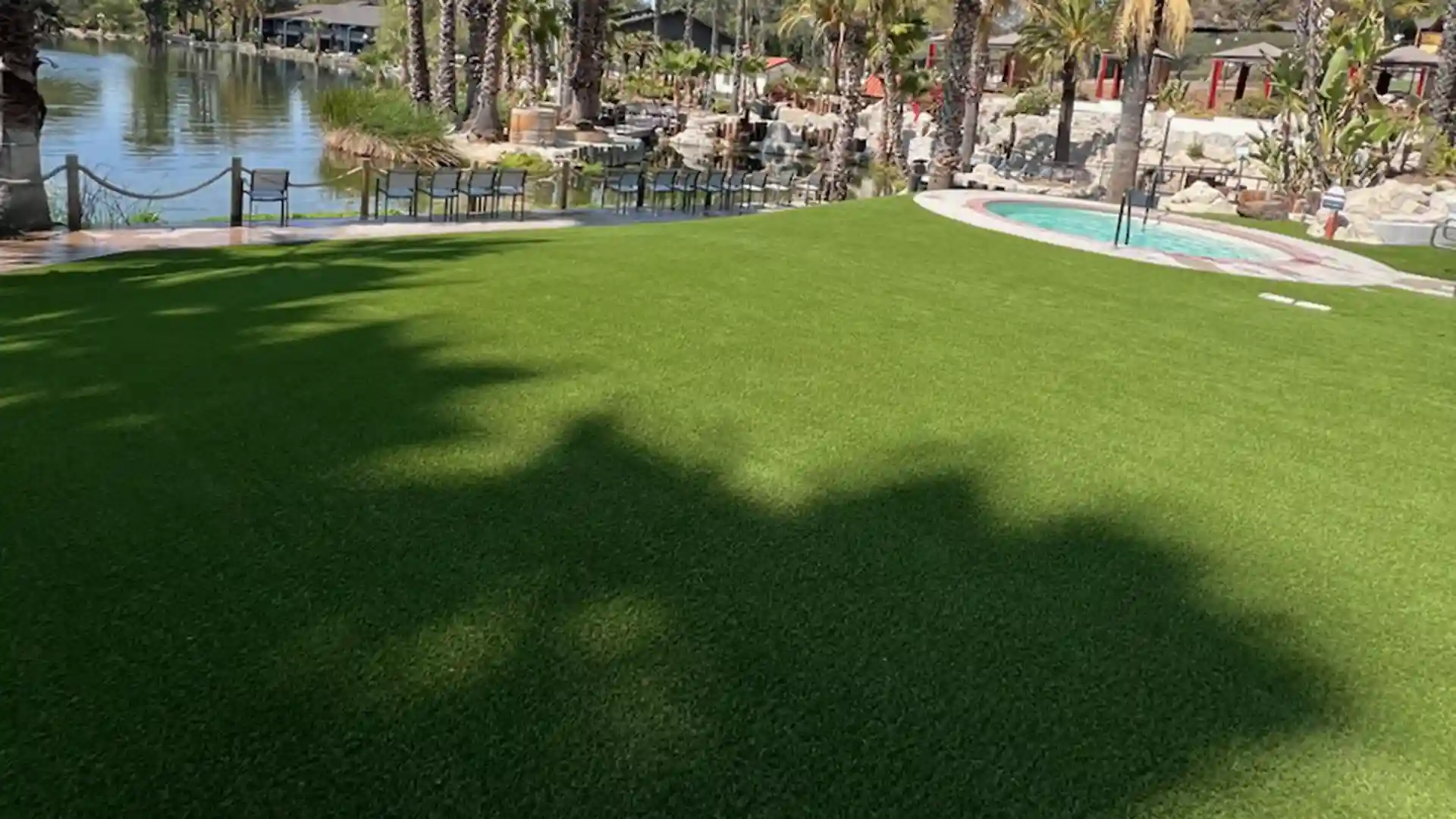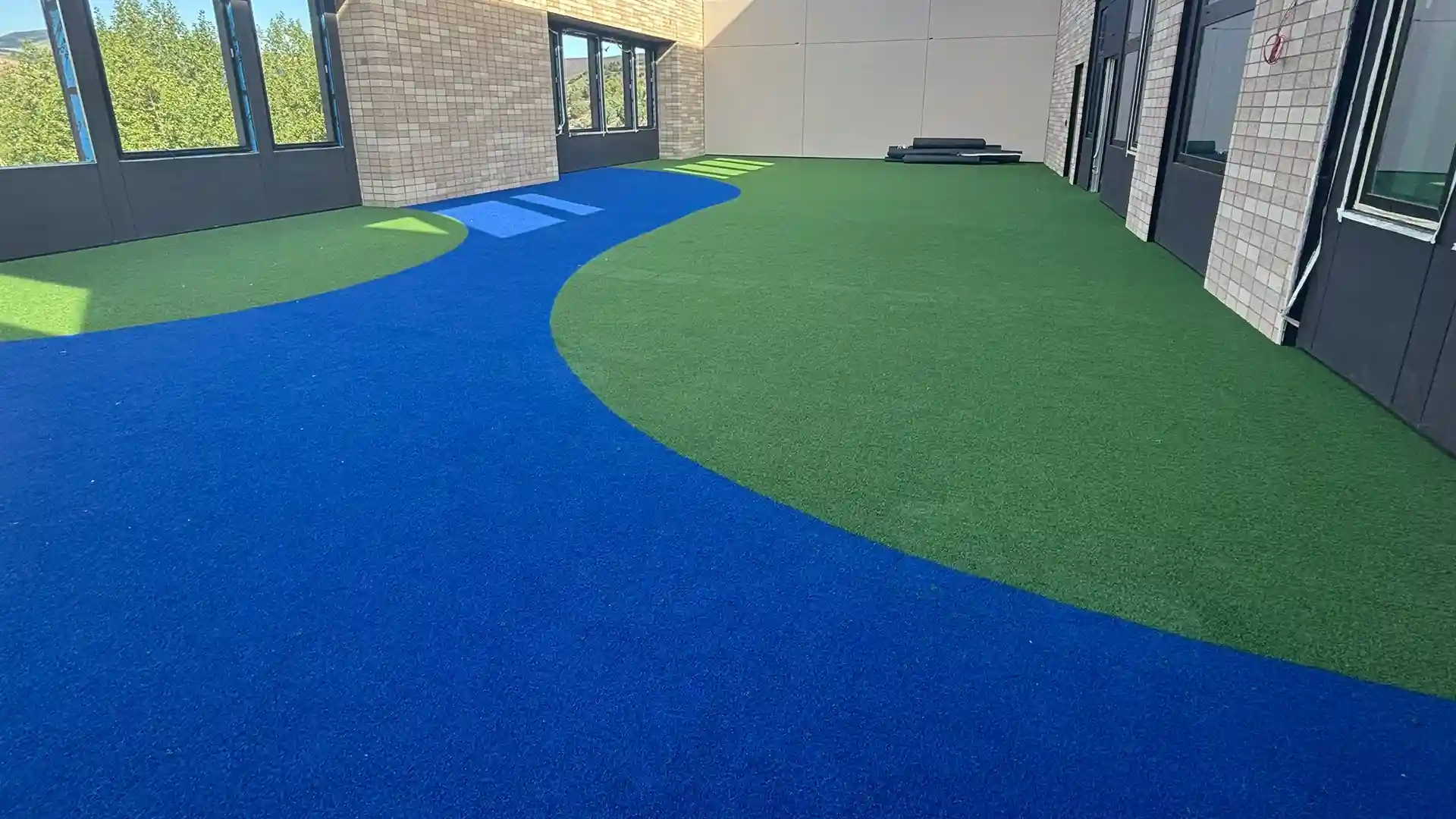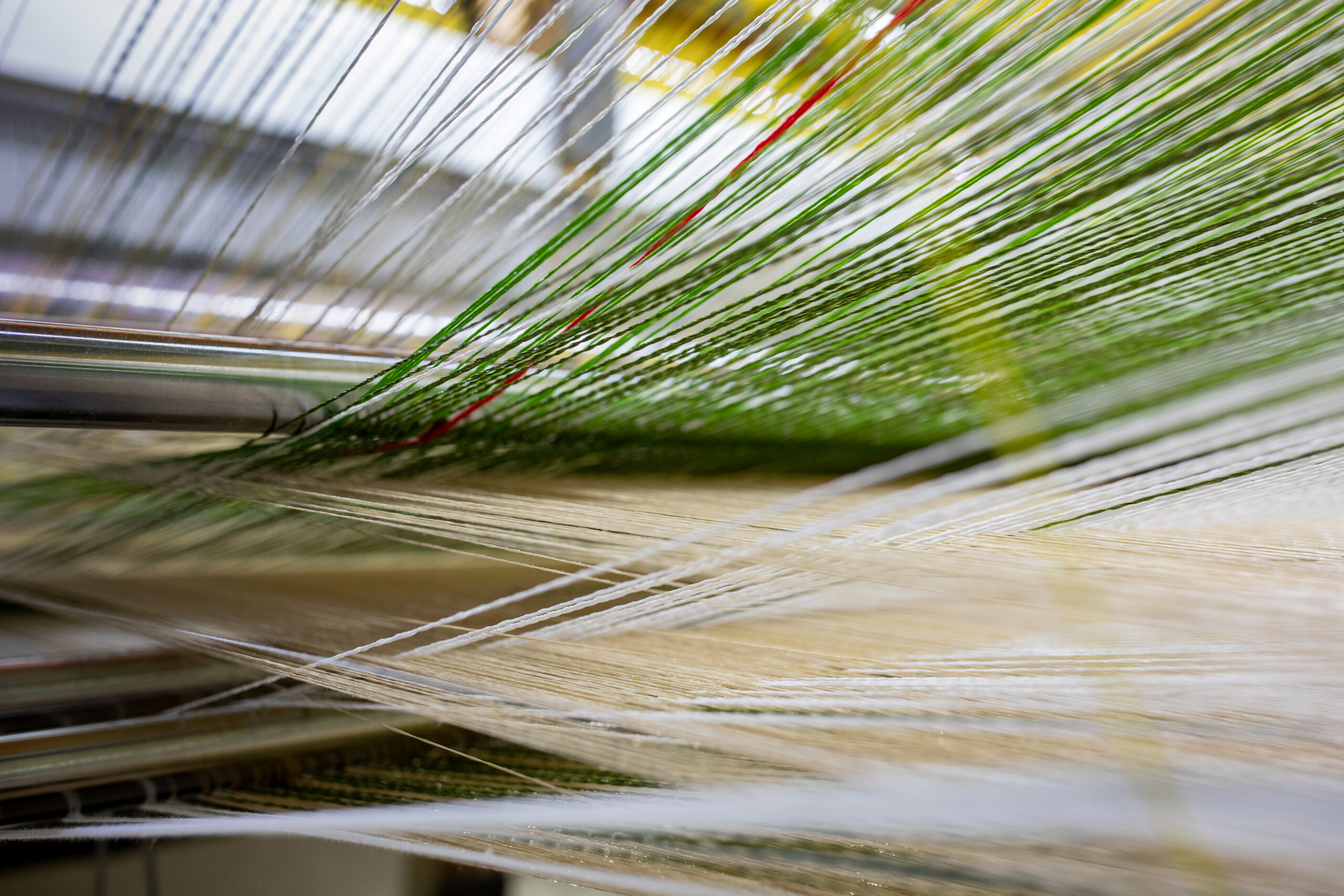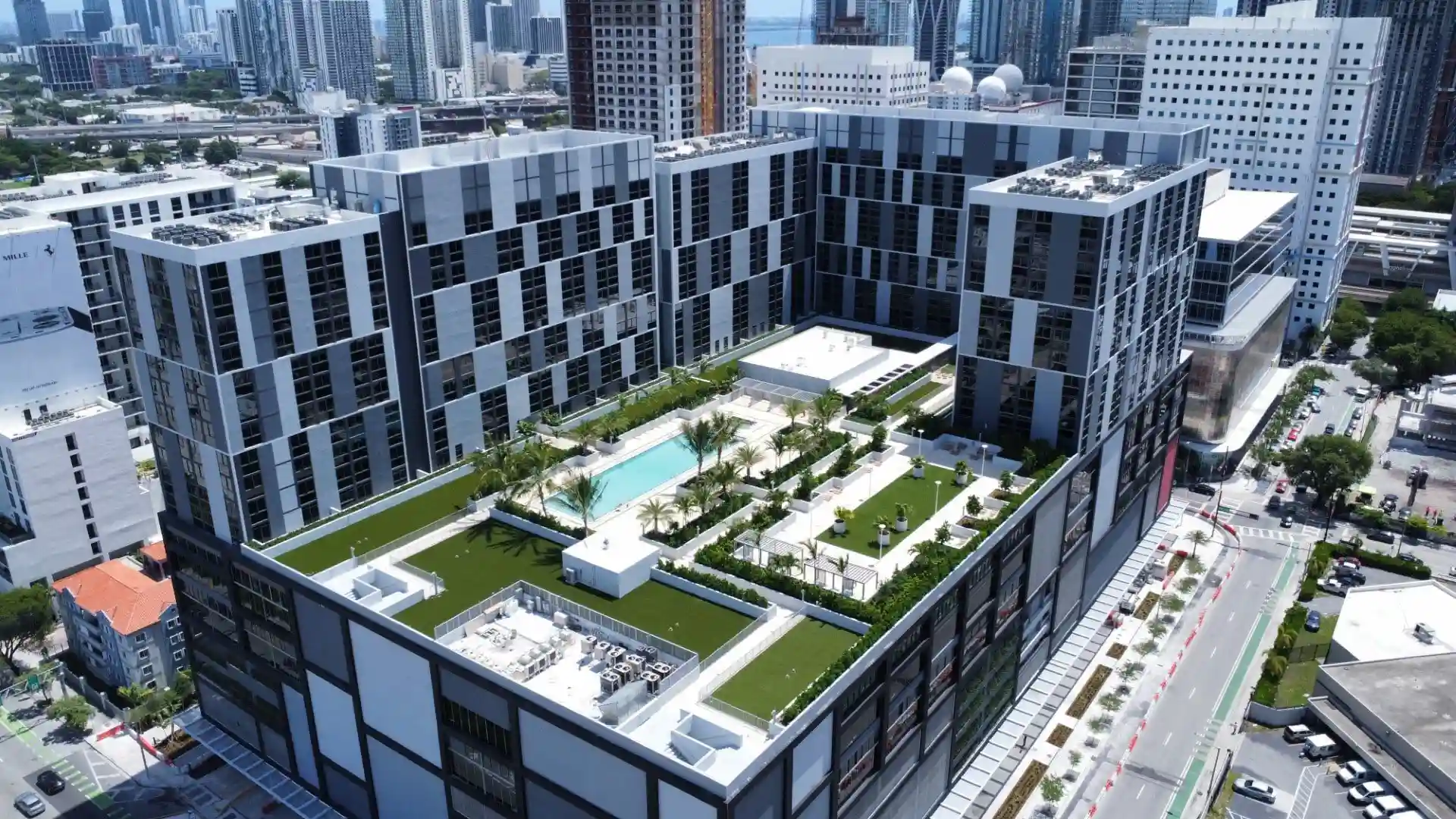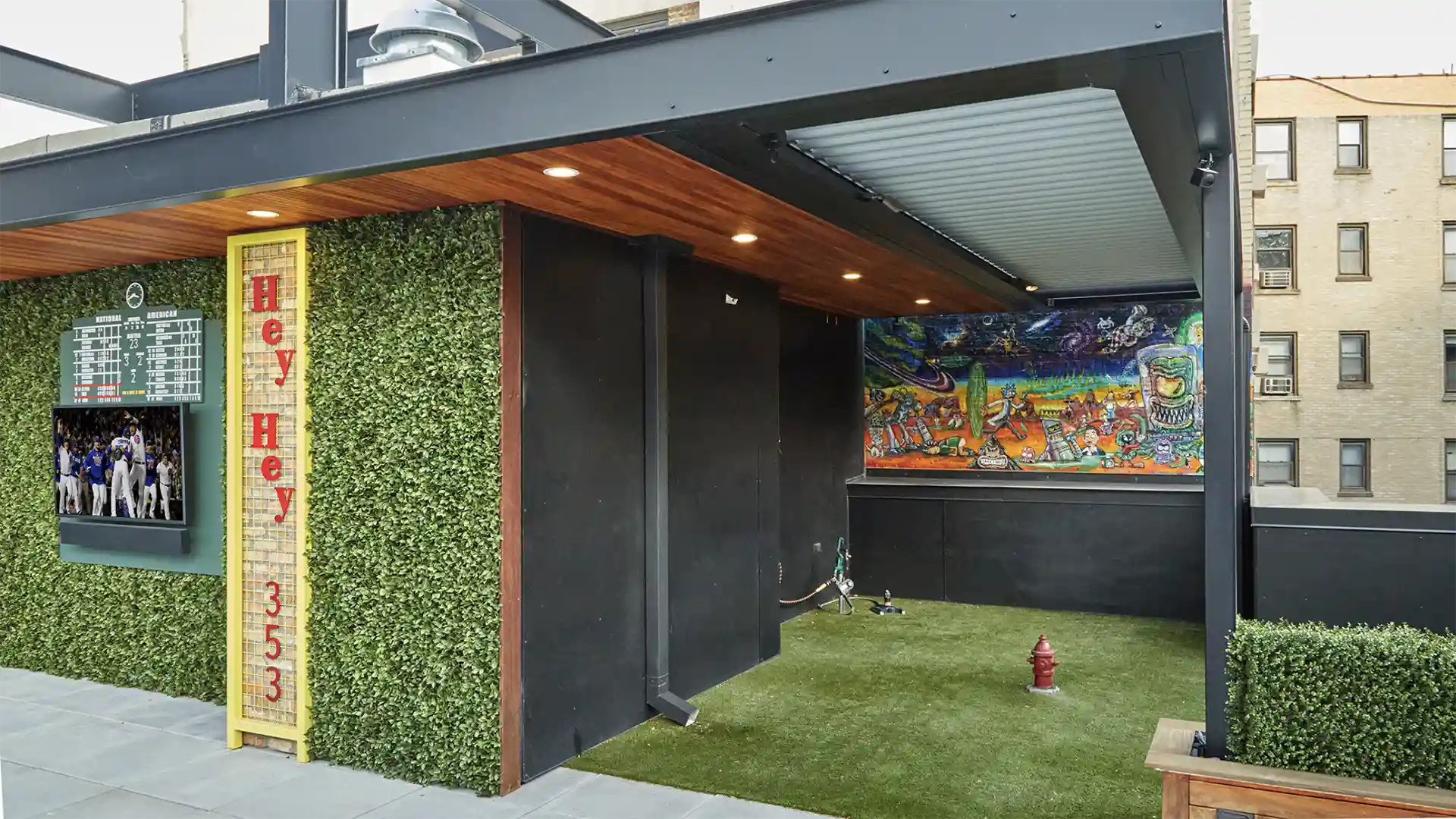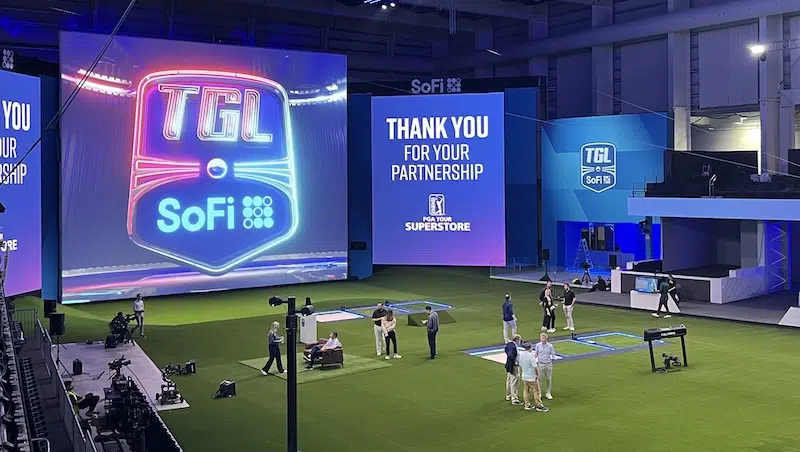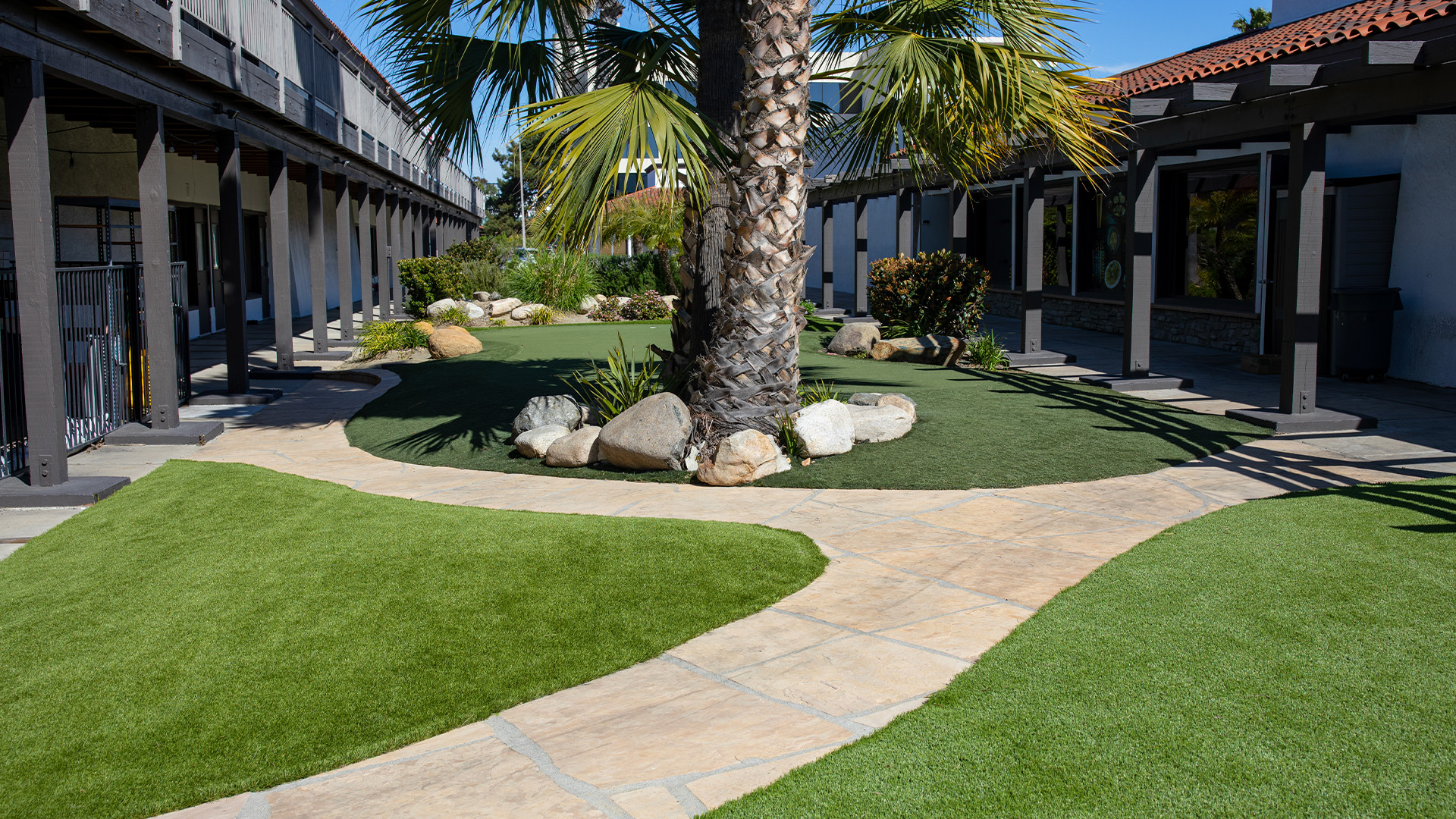
How to Choose the Best Artificial Grass for Any Project
Choosing artificial grass is a long-term investment, so it’s important to select the right product that perfectly suits your project’s needs. To help you make an informed decision, we’ve outlined a step-by-step guide below. Plus, we’ve included a handy checklist and an FAQ to make the process even easier.
Step 1: Define the Purpose of Your Project
Before you dive into the details, ask yourself: what am I trying to create? Whether it’s a safe play area for the kids, a durable space for your pets, or a sleek indoor artificial green wall statement piece, the purpose and scope of your project shape everything else.
Use the questionnaire below to map out the key details of your project, or consult with SYNLawn’s Project Wizard for interactive guidance.
| Key Considerations | Options |
|---|---|
| Who will use the turf? | ☐ Kids ☐ Pets ☐ Athletes ☐ All of the above |
| What is the application? | ☐ Landscaping ☐ Playground ☐ Pet zone ☐ Sports field ☐ Rooftop ☐ Artificial Green Walls ☐ Patio ☐ Backyard Court ☐ Commercial |
| How often will it be used? | ☐ Daily ☐ Weekly ☐ Occasionally |
| What is the area size? | ☐ Small (under 100 sq ft) ☐ Medium (100-500 sq ft) ☐ Large (over 500 sq ft) |
| What is the expected foot traffic? | ☐ Low (Decorative or rarely used spaces) ☐ Medium (Backyards or occasionally used areas) ☐ High (Playgrounds, sports fields, or heavily used spaces) |
Bring the completed questionnaire when consulting with vendors or use it when browsing products online. This information will help you compare options and ensure you choose the best artificial grass products for your specific application.
Step 2: Prioritize Safety and Health
If your project involves kids, pets, or athletes, safety should be a top priority.
Artificial grass comes with various features to ensure a safe and comfortable environment, including:
- Antimicrobial Protection: Sanitized® antimicrobial technology prevents bacterial growth and controls odors, making it ideal for pet areas. This feature—a patented SYNLawn technology—keeps the surface clean and hygienic for daily use.
- Extra Cushioning: Provides added shock absorption, reducing the risk of injuries from falls. This feature is particularly important for playgrounds or areas where kids are active.
- Fire Resistance: Many artificial grass products are designed to slow the spread of flames, offering extra safety for outdoor areas. This feature is especially valuable for residential yards, commercial spaces, or locations prone to wildfires. SYNLawn’s turf is tested for the highest fire-safety level–ASTM E108 Class A Fire Rating.
Is Artificial Grass Safe for People With Allergies?
Yes, artificial grass is hypoallergenic and can help reduce allergens compared to natural grass. Without pollen from weeds or grass, it’s a great choice for people with seasonal allergies. Just keep in mind that surrounding plants and trees may still produce allergens.
Does Artificial Grass Attract Insects Or Pests?
Artificial grass isn’t made with organic materials, so it doesn’t attract insects or pests like natural grass does. That means no ants, grubs, or other critters taking over your lawn. It’s a cleaner, more enjoyable solution for both residential and commercial spaces.
Step 3: Choose the Right Turf for Your Climate
Your local weather plays a huge role in how your turf performs. Is your space exposed to blazing sun, heavy rain, or both? Either way, you should choose turf that’s built to handle your specific climate.
Weather-Specific Features:
- Hot Climates: Turf with HeatBlock™ technology keeps surfaces cool, so you can walk barefoot in comfort.
- Rainy Regions: High-permeability backing drains water quickly, preventing puddles and odors.
- Sunny Spots: UV-resistant turf keeps its color and strength, even after years in direct sunlight.
Make sure to also check the drainage rate for areas that receive a lot of rain or need to stay clean, such as pet zones.
What Happens To Artificial Grass in Freezing Weather?
High-quality artificial grass can handle freezing temperatures without cracking or shrinking. Snow and ice won’t damage it, and good drainage will keep melted snow from pooling.
Can Artificial Grass Be Used on Sloped Areas or Uneven Ground?
Yes, artificial grass can be installed on slopes or uneven terrain, but the process requires proper preparation. The area must be leveled or contoured, and professional installation is often recommended to ensure the turf stays securely in place and provides proper drainage.
Step 4: Carefully Assess All Maintenance Features
One of the best things about artificial grass is how little upkeep it needs compared to natural lawns. That said, some spaces will require specific care depending on their use.
Maintenance Made Easy:
- Pet Areas: Quick-drain turf prevents puddles and makes cleanup easy. Pet-friendly artificial grass is designed to resist odors and can be hosed down effortlessly.
- Decorative Spaces: Simply rinse off dust, debris, or leaves every so often to maintain its fresh appearance. Using a soft broom can help fluff the grass and restore its look after heavy use.
- High-Traffic Areas: In areas with heavy foot traffic, brushing the grass occasionally helps prevent matting and keeps the fibers upright.
Choose turf with the right features for your maintenance and care preferences—some options, like SYNLawn’s premium turf products, only require minimal upkeep.
How to Prevent Weeds From Growing Through Artificial Grass
Artificial grass is installed with a high-quality weed barrier underneath to block weed growth. This geotextile layer prevents seeds from germinating and weeds from sprouting through the turf. Proper installation, including secure edging, further prevents weed invasion. Occasional maintenance, such as removing any organic debris that collects on the surface, helps keep the area entirely weed-free.
Step 5: Choose a Certified Installation Expert
Professional installation is crucial for ensuring proper drainage, secure seams, and a level surface. These factors contribute significantly to the long-term performance and durability of artificial grass, preventing issues like uneven surfaces, water pooling, or turf shifting over time.
Can Artificial Grass Be Used for Temporary Installations?
Absolutely! Artificial grass is an excellent choice for temporary installations such as:
- Event Spaces: Create visually appealing, low-maintenance areas for weddings, parties, or corporate events.
- Trade Shows: Use it to add a pop of green to booth setups and display areas.
- Pop-Up Displays: Ideal for seasonal setups or brand activations, as it’s easy to install, remove, and reuse.
Its lightweight, modular design makes artificial grass perfect for short-term projects. It can be rolled out and secured quickly, and when the event is over, it can be packed up and stored for future use, offering both convenience and versatility.
Step 6: Go Green (Literally and Figuratively)
Artificial grass is eco-friendly by design—no mowing, watering, or fertilizing required—but some options go even further to reduce their environmental impact.
SYNLawn’s Eco-Friendly Features:
- EnviroLoc™ Backing: Made from renewable, plant-based materials like soy, this technology reduces the carbon footprint of your turf.
- Water Savings: Our artificial grass products eliminate the need for irrigation, conserving thousands of gallons of water annually.
- Recyclable Products: SYNLawn’s manufacturing process ensures your turf can be repurposed when it’s time for an upgrade.
If sustainability is a priority, always ask the manufacturer about eco-certifications or materials used in their products.
Can Artificial Grass Be Recycled?
Yes, many artificial grass products are recyclable, including those from sustainable manufacturers like SYNLawn. We recycle continuously, and our products are manufactured in ISO 90001-certified factories.
Step 7: Assess Long-Term Value and Durability
Artificial grass is an investment that pays off in durability, savings, and convenience.
What You’re Getting:
- Durability: High-quality turf is built to last and withstand heavy foot traffic, harsh weather, and daily wear and tear. Many options are resistant to fading, flattening, or fraying, ensuring they maintain their fresh appearance for years.
- Cost Savings: Say goodbye to watering, mowing, and fertilizing. Over time, these savings add up and offset the upfront cost.
- Warranty Protection: A good warranty covers fiber loss, UV damage, and defects, giving you peace of mind and ensuring long-term value.
Investing in a product with a proven track record for durability and warranty protection will save you money and effort over time while providing lasting benefits.
How Does Artificial Grass Impact My Home’s Resale Value?
Artificial grass can boost your home’s curb appeal, especially in regions where maintaining a natural lawn is challenging due to water restrictions or harsh climates. Buyers often appreciate the low maintenance and durability of artificial grass, making it a smart investment for outdoor improvements.
Step 8: Pick Your Style and Personalize Your Project
Artificial grass can be as subtle or bold as you like. Modern turf options are designed to look and feel like real grass, and can also be customized for unique design features.
Find Your Look:
- Natural Aesthetics: Multi-tone fibers and realistic textures replicate the soft, natural look of grass. For example, you can choose turf with thatch, a secondary layer of shorter fibers that mimics natural grass roots.
- Creative Designs: Want something bold? Choose custom colors or patterns for play areas, retail displays, or living walls.
Artificial grass isn’t just functional—it’s a creative tool. Make your project stand out with unique features that reflect your style.
Creative Ideas:
- Mini-Golf Greens: Add custom obstacles or themed zones for backyard fun.
- Living Walls: Use vertical turf to transform office or restaurant spaces.
- Playgrounds: Incorporate colorful patterns for interactive play areas.
Look for brands that offer custom artificial turf options to match your vision and make your project truly one-of-a-kind.
What’s The Difference Between Infilled And Non-Infilled Turf?
Infilled turf includes granular material, like sand or rubber, spread between the grass fibers to improve stability, cushioning, and drainage. Non-infilled turf does not require additional materials and is typically lighter and easier to install.
Infilled turf is better for high-traffic or functional spaces, while non-infilled options are often used for decorative or lightweight projects.
Final Step: Bring Your Vision to Life
Artificial grass is more than just a practical choice—it’s your chance to create a space that’s uniquely yours. Whether it’s a backyard that’s always ready for a barefoot stroll, a backyard court where kids can run wild, or a sleek rooftop escape, the right turf can make it happen.
With so many options to fit your needs, you’re just a few decisions away from a stunning, low-maintenance space you’ll love for years. So go ahead—start planning, get inspired, and turn your vision into something incredible!
And if you need any help, make sure to contact our experts—we’ll help you find the best synthetic grass for your project.
